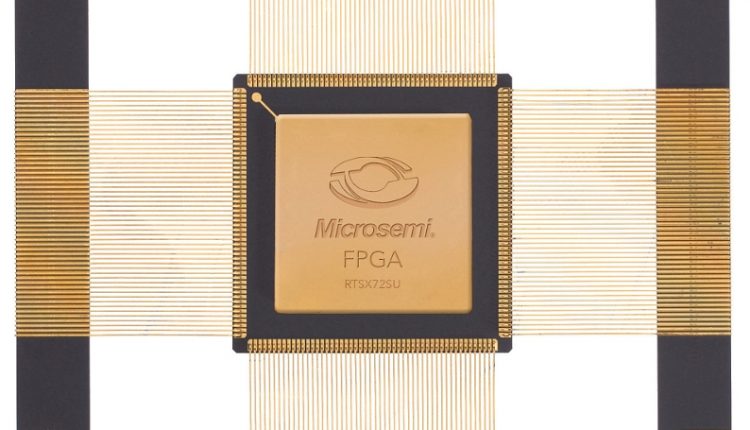Microsemi Corporation announced its industry-leading space solutions are onboard NASA’s New Horizons spacecraft supporting its successful exploration mission to Pluto. The high-reliability Microsemi products on the spacecraft include power supplies, electromechanical latching relays, several JANS class diode and transistor discrete devices, and RTSX-SU field programmable gate arrays (FPGAs) whic h are used in imaging cameras providing remarkable high-resolution images of Pluto, as well as in the communications systems and other avionics and payload systems.
h are used in imaging cameras providing remarkable high-resolution images of Pluto, as well as in the communications systems and other avionics and payload systems.
“Microsemi is honored that NASA selected our high-reliability products once again for the Pluto New Horizons spacecraft exploration mission,” said James J. Peterson, chairman and CEO of Microsemi. “This historic mission is yet another milestone in space exploration and we salute NASA, its contractors and the many individuals involved in achieving its many successes. We are proud our technology played a crucial role in this significant event, and we look forward to our continued commitment to supporting the most demanding space missions and development programs around the world with our highly specialized solutions.”
The unmatched performance capabilities and breadth of Microsemi’s space product portfolio allow the company to offer radiation-tolerant and radiation-hardened components for the most demanding space applications. With highly reliable solutions specifically designed for deep space and the harshest conditions, Microsemi’s FPGAs lead the industry in mitigation of radiation effects. The FPGAs onboard NASA’s Pluto New Horizons spacecraft are radiation-hardened by design and have been used in missions to the moon, Mars, Venus, the outer planets and in many earth-orbiting satellites.
Microsemi’s space heritage began in 1957 when its micro-positioner relay was launched in the Atlas rocket. The company’s space technology was subsequently deployed in a variety of space missions in the 1950s and 1960s, as well as in the Surveyor, Apollo and Saturn programs of the late 1960s and 1970s, the international space station program initiated during the 1990s, and the Mars Rover, Mars Science Lab and Cygnus spacecraft initiatives of the 2000s and 2010s. Microsemi also powered the mission computer on the Near Earth Asteroid Rendezvous (NEAR) Shoemaker Satellite during its five-year mission and ultimate landing on the surface of Eros, as well as the 10-year-long Rosetta spacecraft mission to examine Comet 67P/Churyumov-Gerasimenko.
According to Databeans, Inc.’s research report titled, “2014 Semiconductors in Military and Aerospace Electronics,” Microsemi remains the leading supplier to the military and aerospace semiconductor market with over 19 percent market share.
Microsemi Leading Space Innovation for More than Half a Century
With one of the industry’s most comprehensive portfolios of space products, Microsemi provides radiation-tolerant FPGAs, rad-hard mixed-signal ICs, rad-hard DC-to-DC converters, precision time and frequency solutions, linear and POL hybrids, custom hybrid solutions, and rad-hard discretes including the broadest portfolio of JANS Class diodes and bipolar products. Microsemi is committed to supporting its products throughout the lifetime of its customer programs. The company recently announced its new LX7730 radiation-tolerant telemetry controller IC providing key functions for sensor monitoring, attitude and payload control, as well as its RTG4™ high-speed signal processing radiation-tolerant FPGA family. The RTG4’s reprogrammable flash technology offers complete immunity to radiation-induced configuration upsets in the harshest radiation environments, requiring no configuration scrubbing, unlike SRAM FPGA technology.
Microsemi Space Forum
Microsemi recently completed its 2015 series of Space Forum events in the U.S., Europe and India. Technical experts from the company provided detailed information and insight on the most innovative space-related products, capabilities, technology roadmaps, as well as solutions to combat the effects of radiation. In addition, Microsemi system architects and application engineers discussed a variety of space system-level challenges and potential solutions.

